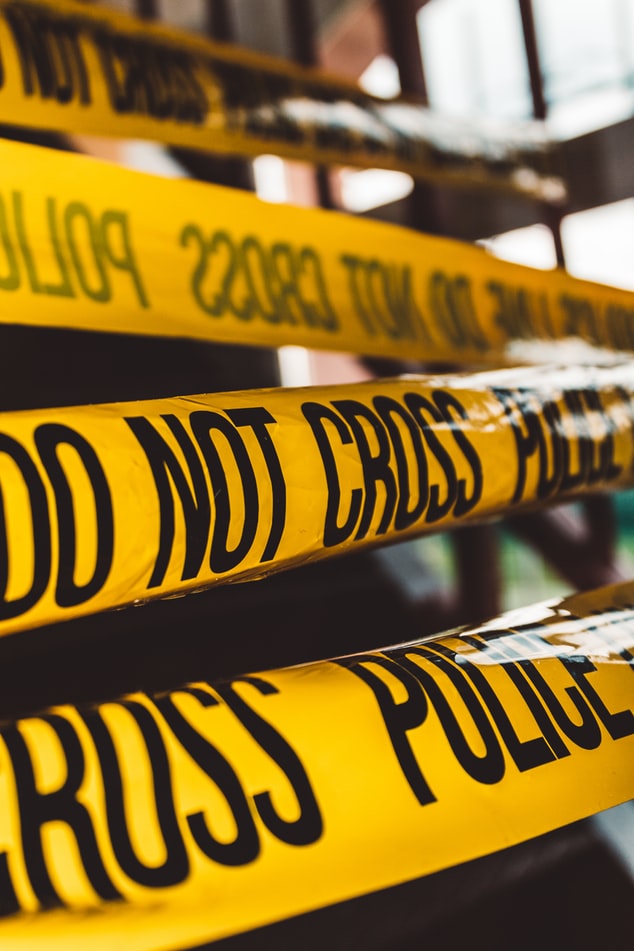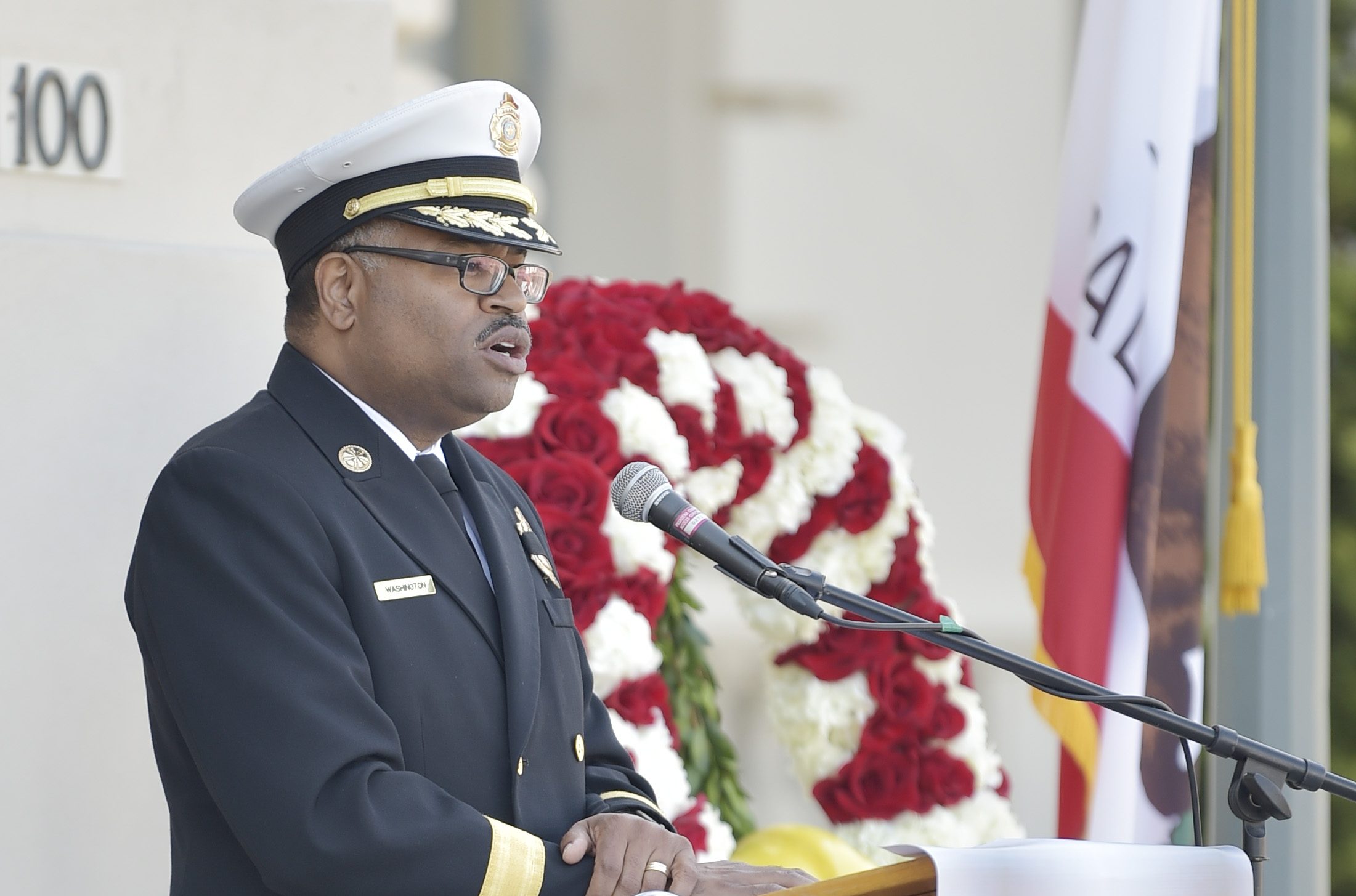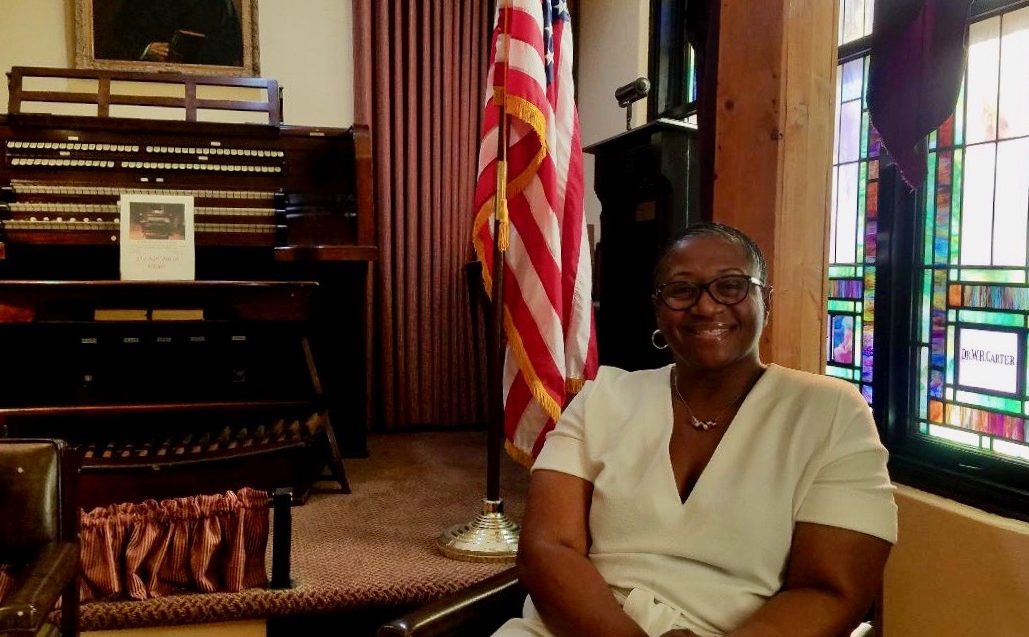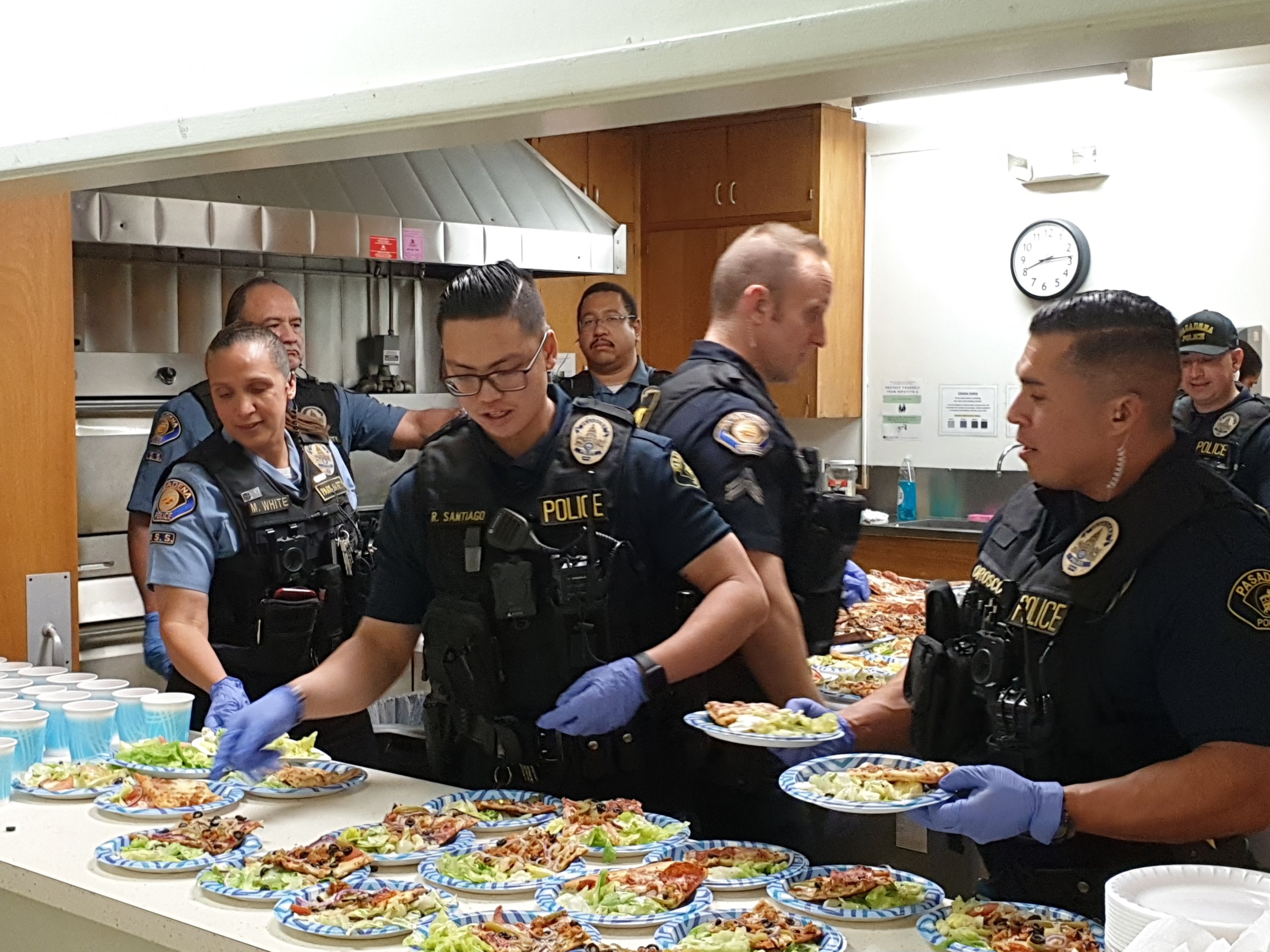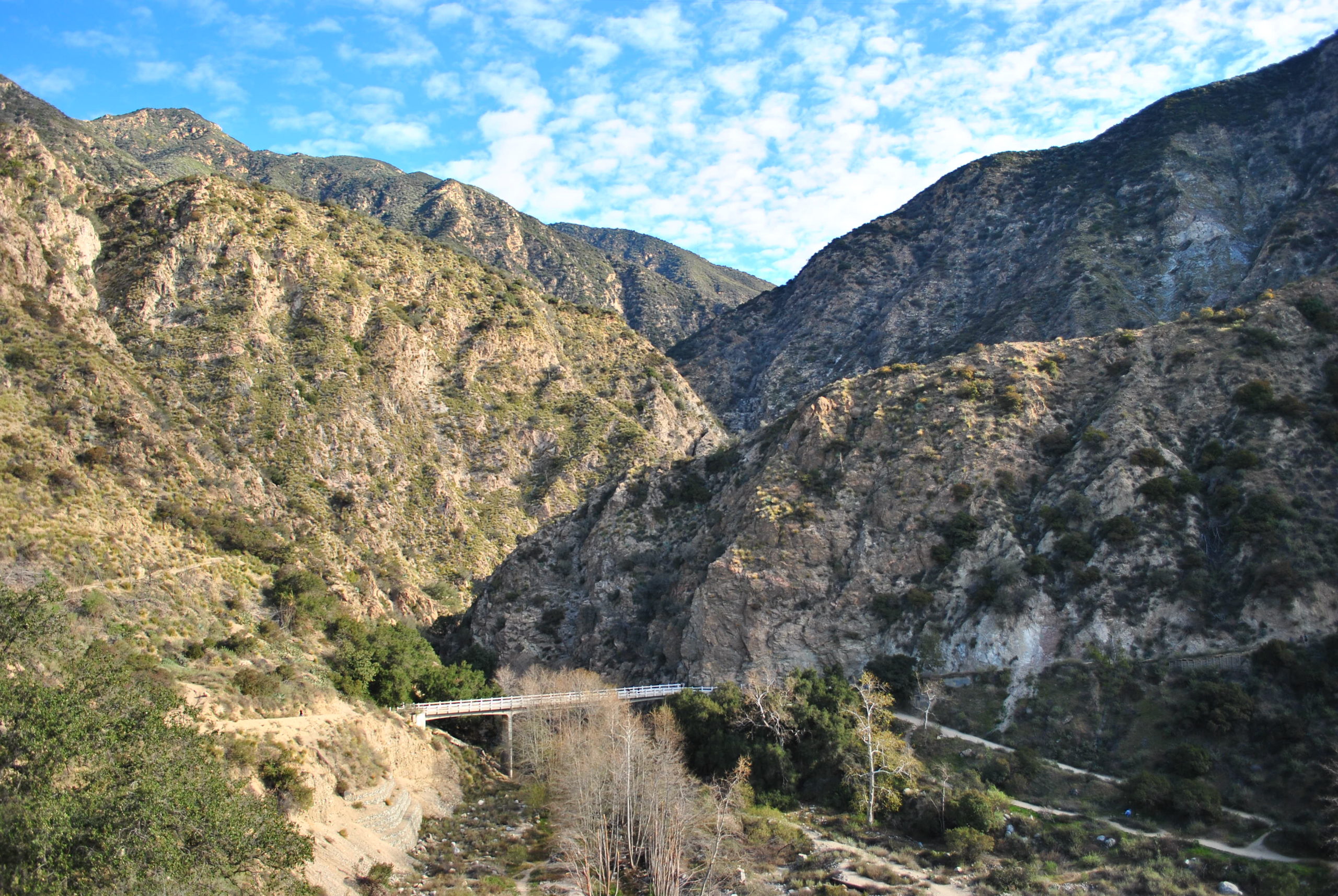
By Galen Patterson
Eaton Canyon was silent on the warm, clear-mountain morning of Feb. 21, until vehicles, including emergency response vehicles from the Pasadena Fire Department (PFD), began swarming the ridge above the canyon on Pinecrest Drive in Altadena.
Before long, dozens of first responders and EMT volunteers were in uniform, jumping into their gear and gathering at the top of the trail. Then the leaders began to speak, briefing their crews on the purpose of the drill and expectations.
The person in charge of the operation, Rob Salazar of PFD, tells the teams that there has been a massive landslide in the same area where in 2005 an El Niño year caused heavy rains, which resulted in a large landslide at the mouth of the canyon. The result is visible from the top of the trail 15 years later.
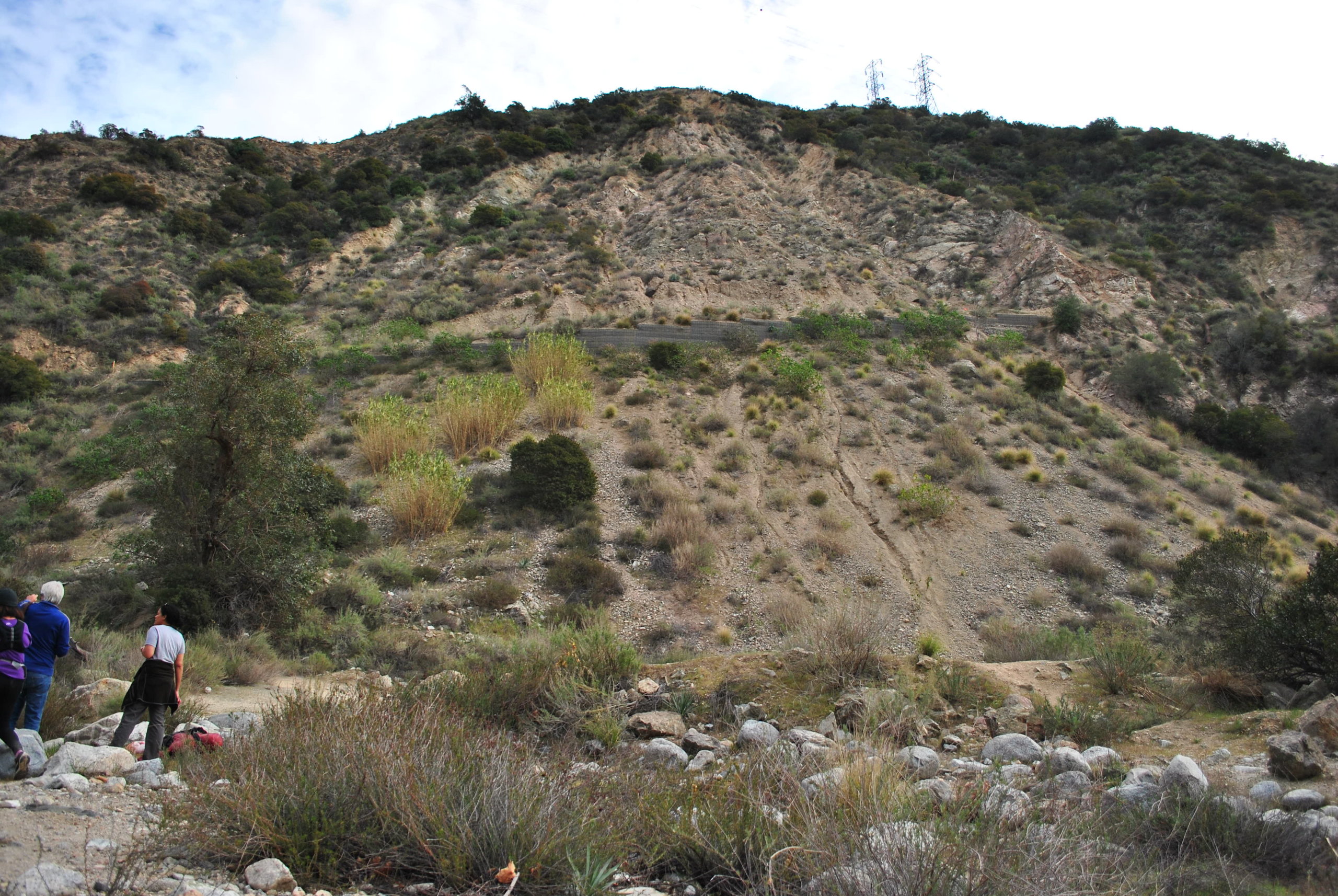
Salazar says there are four victims somewhere in the area, two are in need of amputations and one will need to be extracted by helicopter. The equipment for the drill is compiled in one large cache at the top of the hill. Soon after the briefing, the recon teams go out.
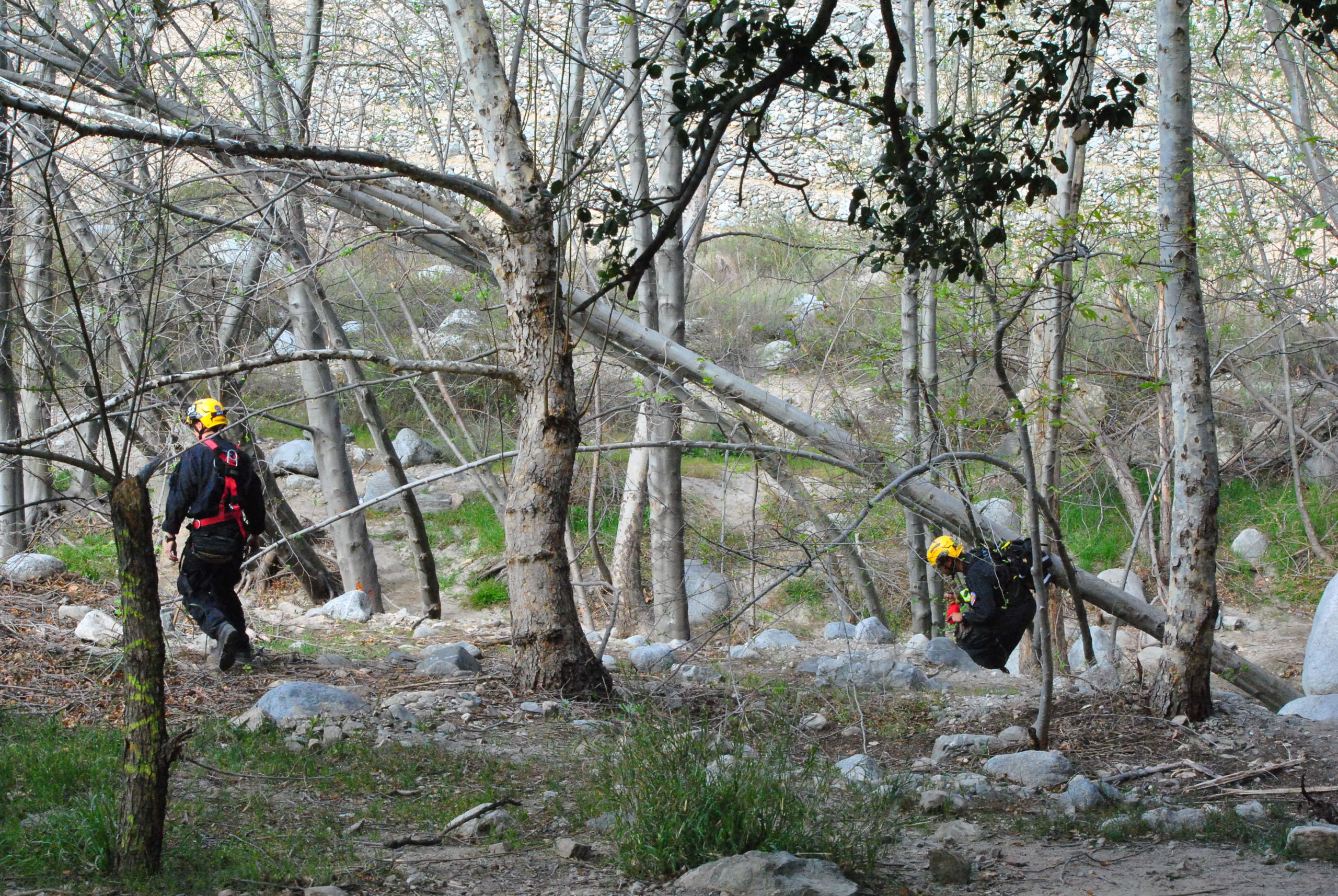
The recon teams work in small groups and cover designated areas in a systematic fashion, staying within visual and audible distance of each other in the thick alluvial brush of the canyon entrance. They need to scour every square inch of the area to make sure everyone is found. They are looking for signs of response and ultimately those that can be saved. Firefighter Casey Hoffman later explains that if those in need of help, now designated as patients, do not fit a certain criteria of bodily function and responsiveness, they will not make it long. He would then put a black tag on them, to mark that the person was found and is most likely dead.
However, this morning the training to stabilize the saveable supersedes the training needed to label things as dead. Within minutes all four patients are found.
They are given numerical designations to clarify for the sake of the inter-agency cooperation. Patient 1 has two broken legs, one of which is trapped under a boulder. Patient 2 has been impaled on a tree several feet off the ground. Patient 3’s legs and left arm are trapped under logs, and Patient 4 is laid up on an incline, his breathing labored, muffled and intensive.
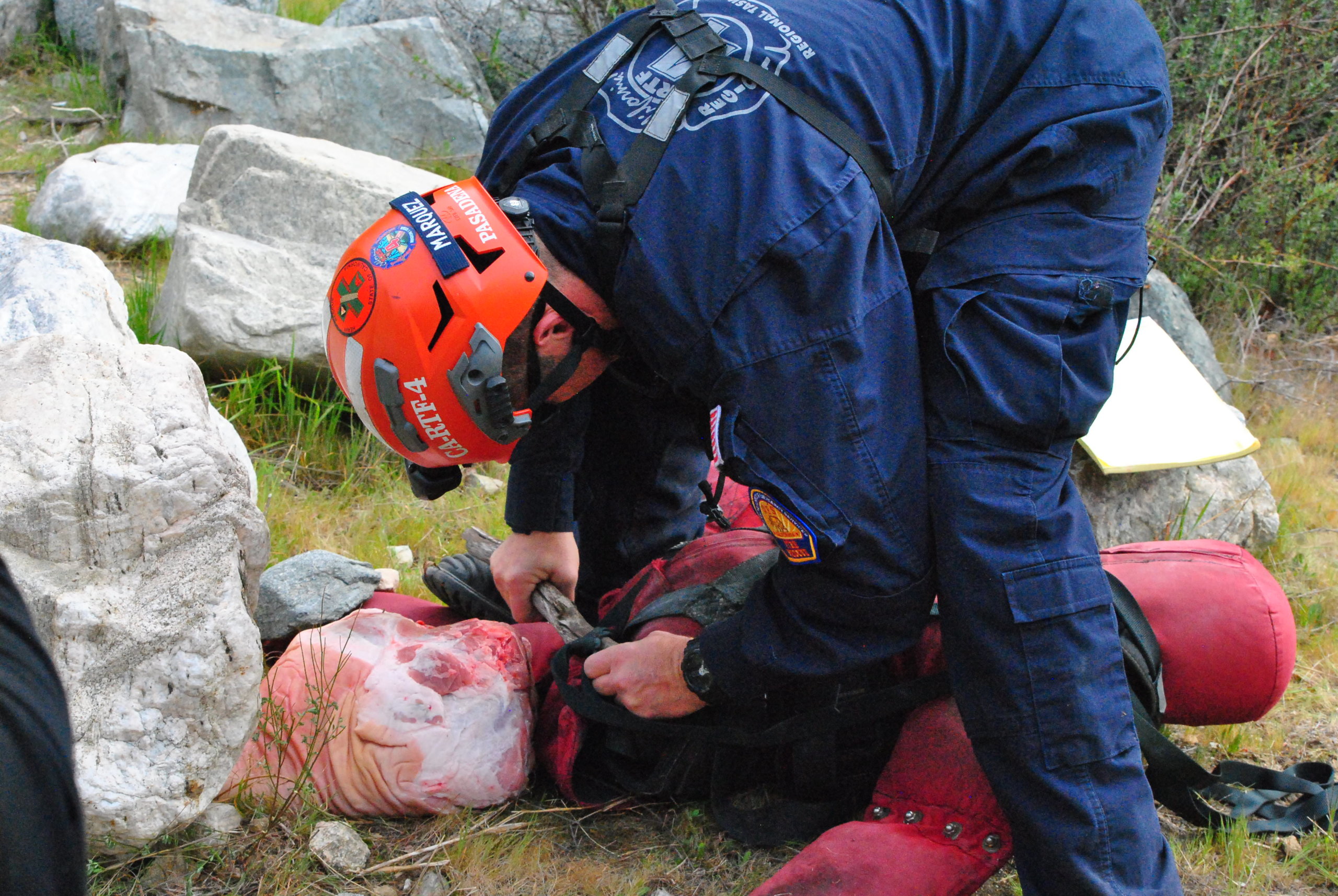
Each patient has been equipped with a real doctor to be the voice of the patient and to give information on the patient that medics would normally be finding themselves — such as vital signs and measurements, in addition to cries of pain and a full list of injuries.
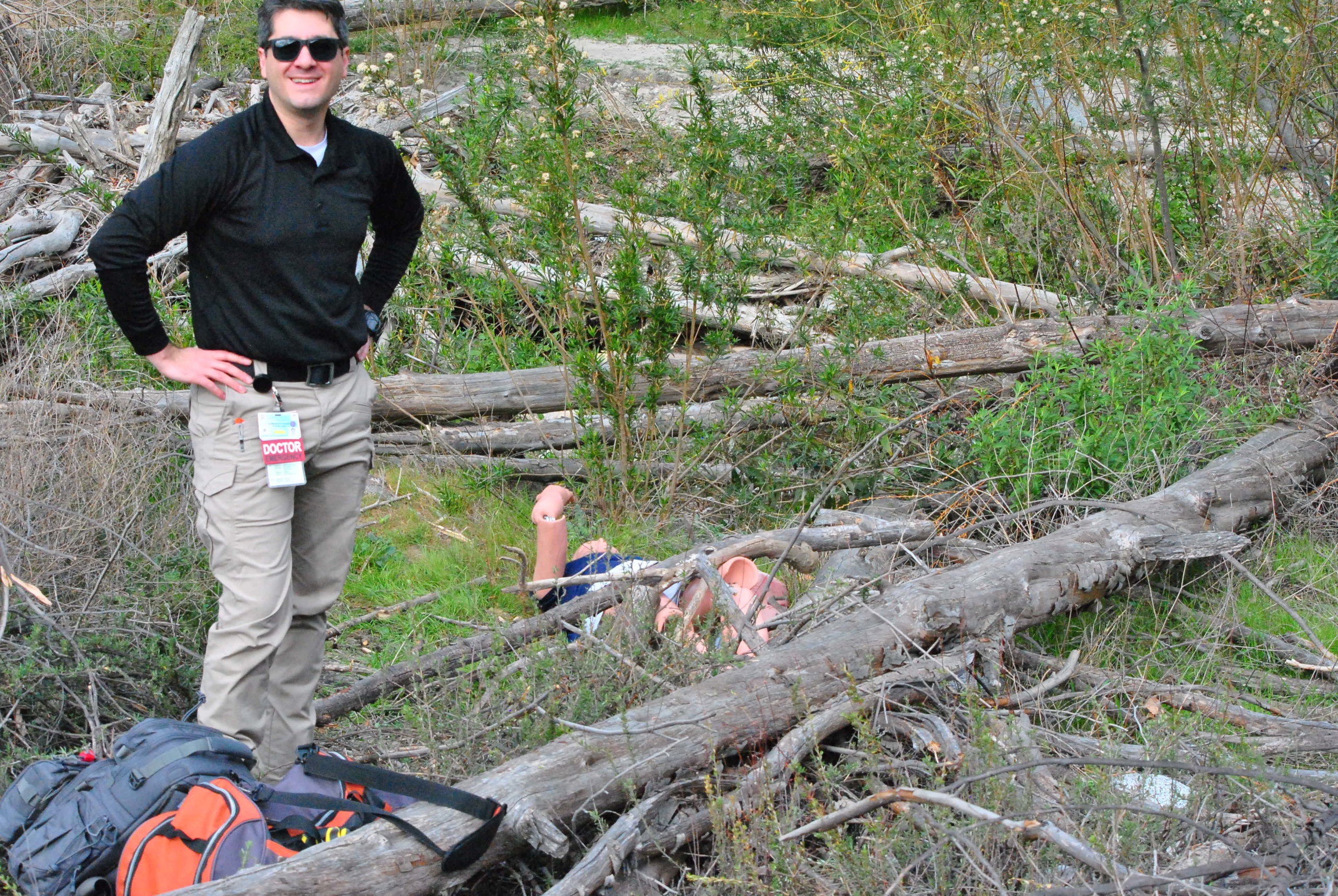
Finished with the reconnaissance, the recon teams split up as the medics begin assessing the damage on the patients.
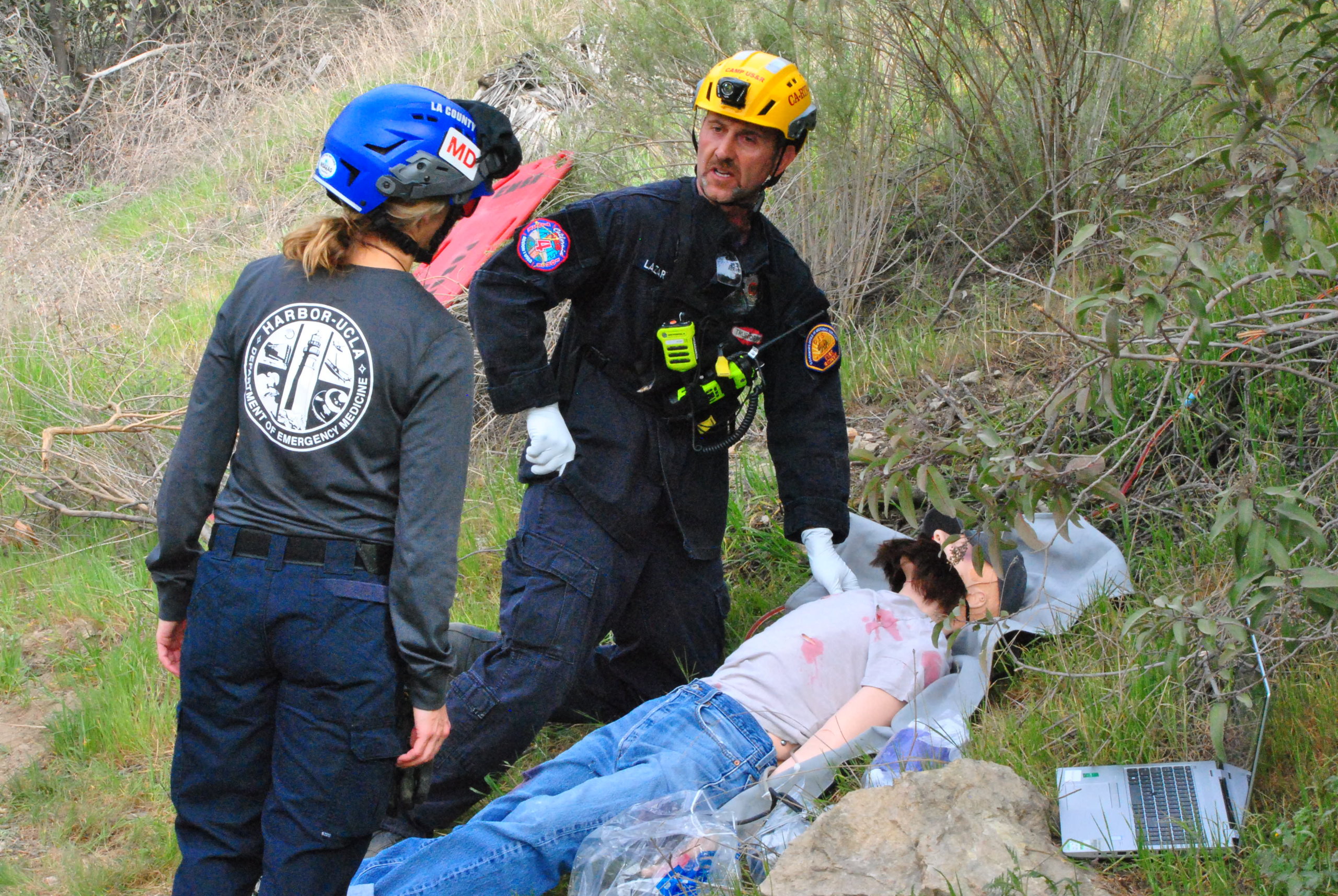
Patients 1 and 3 have limbs trapped and will need field amputations and the Hospital Emergency Response Teams (HERT) are notified.
Three medics are struggling to identify and stabilize the injuries on four patients when EMTs show up and offer their help. The EMTs were in the briefing at the top of the hill and are there for the added training.
Tourniquets have been applied to the seriously bleeding patients but a problem quickly arises. The teams have practically nothing to treat the injuries further. “Ordinarily, I would have my backpack with everything I need,” said Hoffman, but in this drill, everything is still at the top of the hill.”
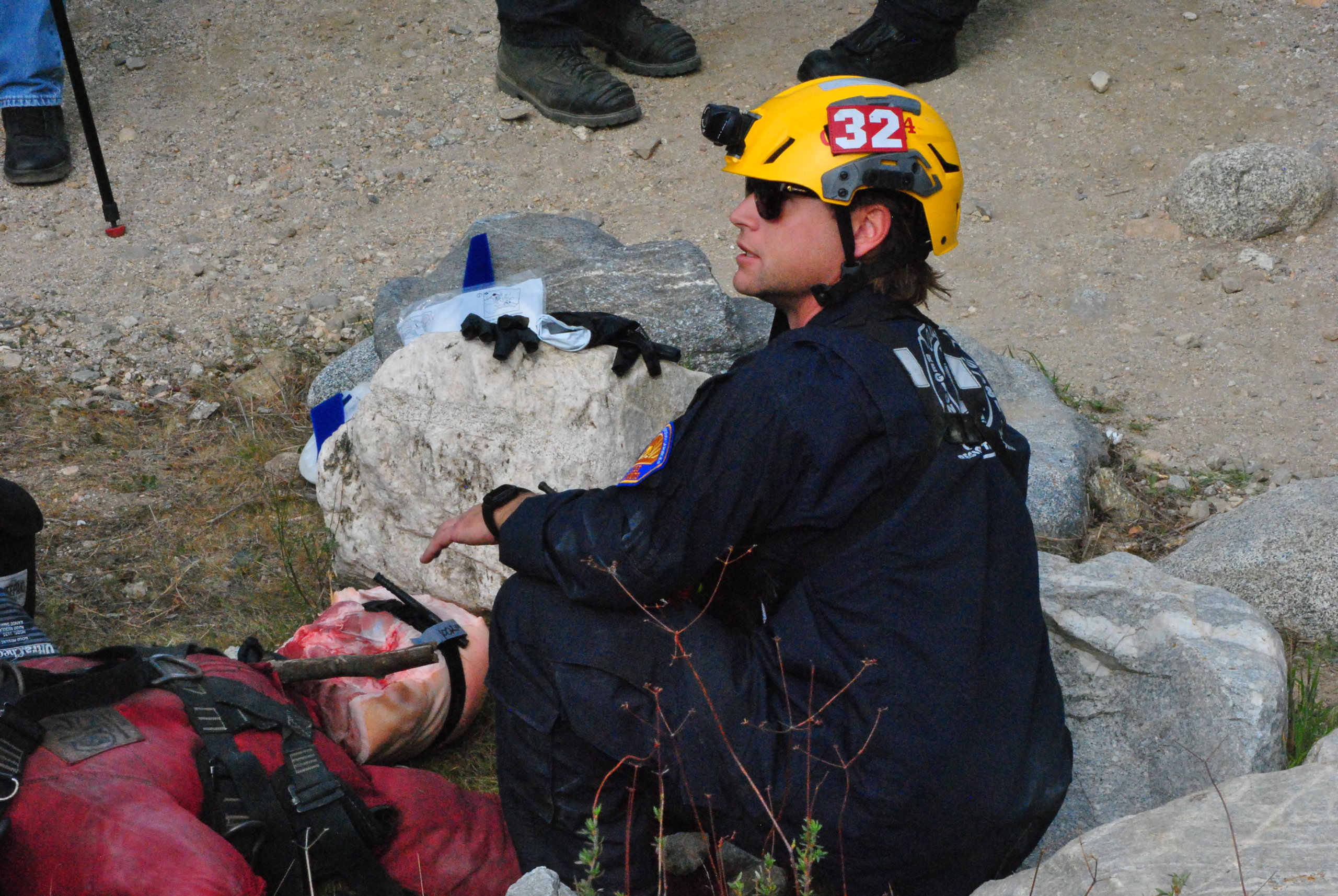
The call goes out and the supplies are immediately loaded up onto an all-terrain vehicle and sent down.
While Patients 1, 3 and 4 wait for further treatment, the firefighters have begun lifting Patient 2 out of the tree using a harness and improvised lift. The patient is laid on the ground, about the time the medical equipment makes its way down the hill. The gear is dropped at the bottom and is quickly picked over while the returning vehicle picks up Patient 2 and safely evacuates him from the disaster area.
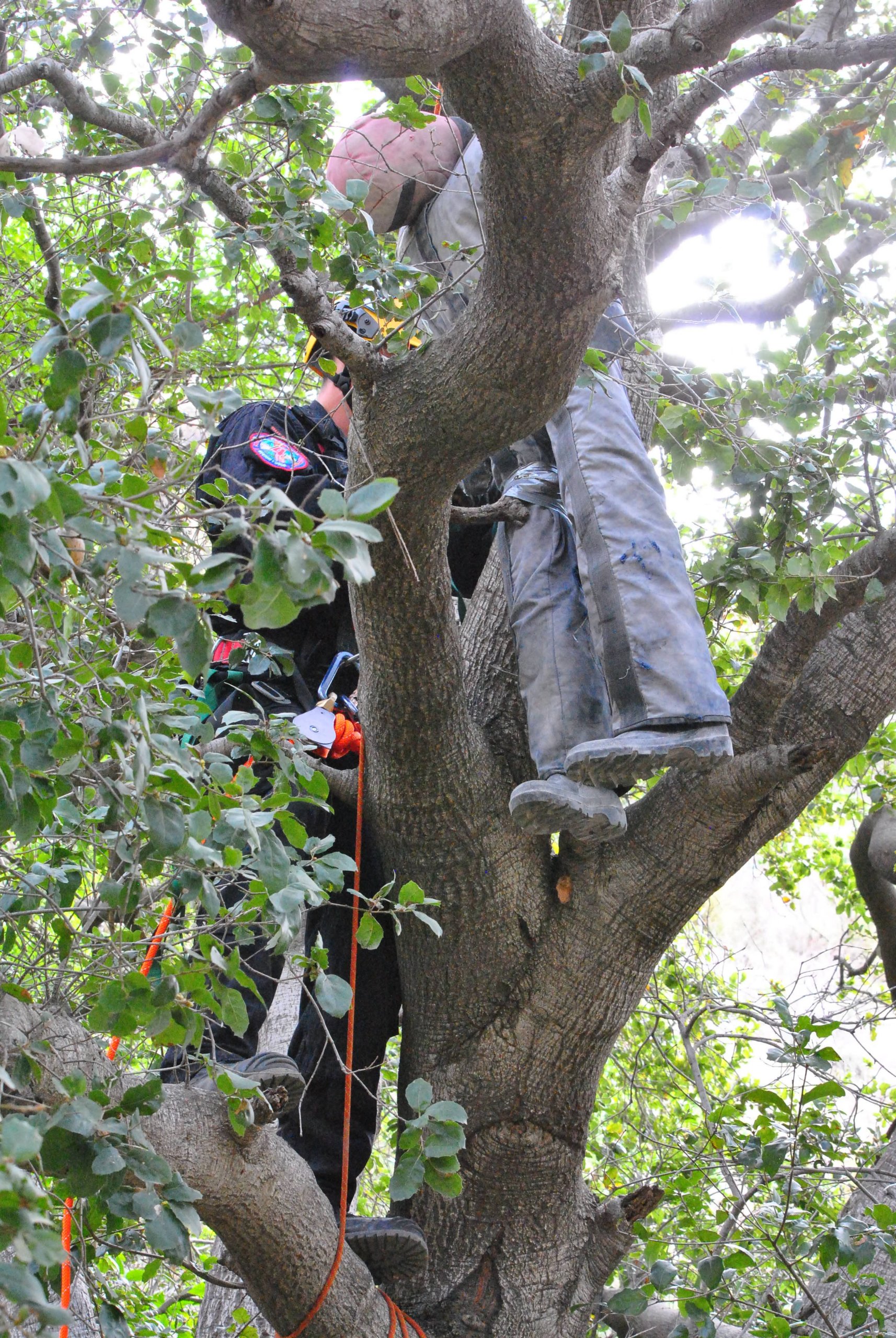
With one patient away for recovery, the other three have begun receiving further treatment from the medics. They assess and administer pain medication under the close observance of the doctors, while talking to the patients to make sure they are still responsive and not in shock from blood loss.
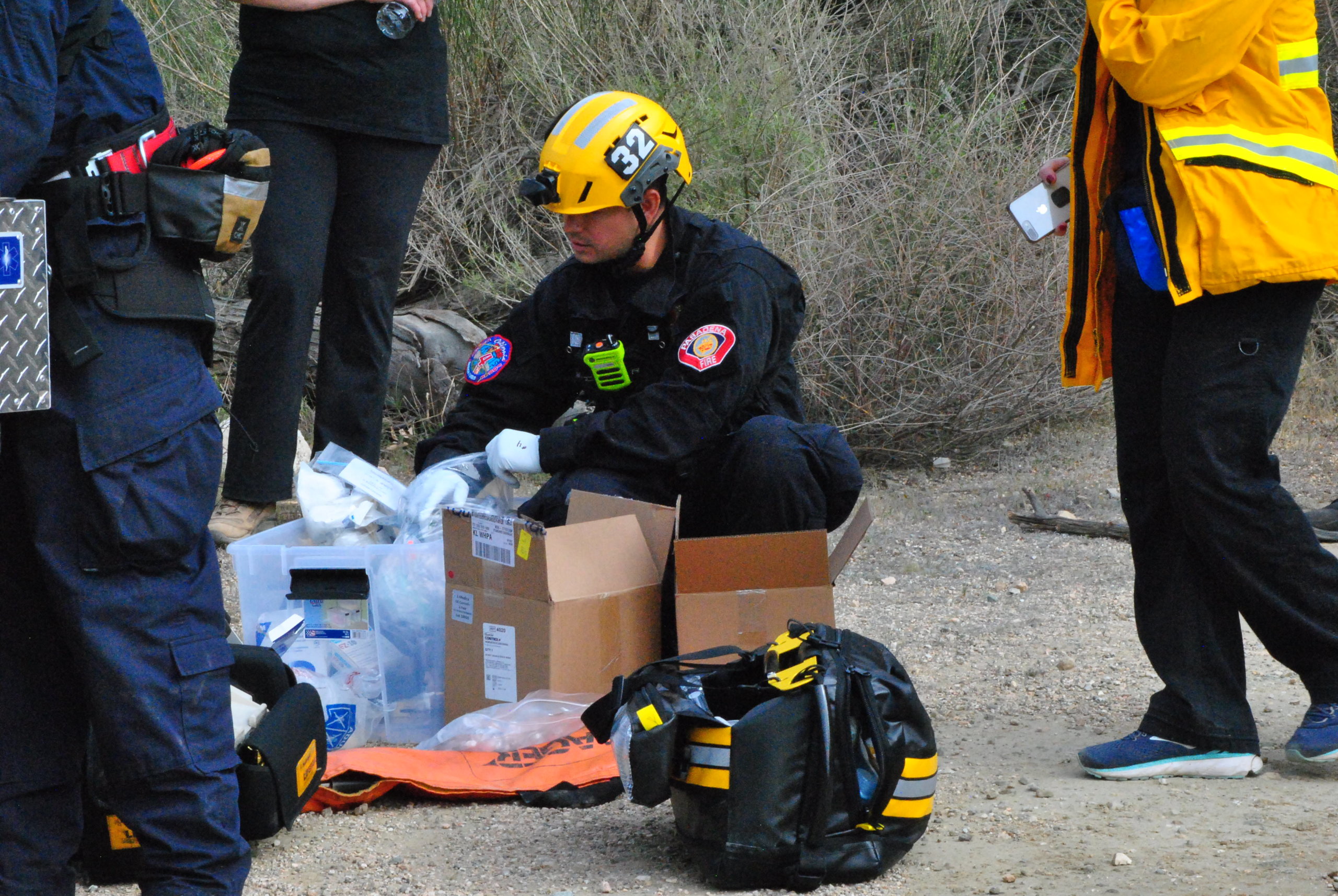
With a dramatic entrance, the helicopter arrives, carrying HERT personnel. The small teams operate in groups of three to four. HERT groups usually include one surgeon, one emergency physician and one nurse. In a perfect world, one HERT group would be assigned to one patient, but this is an emergency drill and manpower is a premium at the bottom of the canyon.
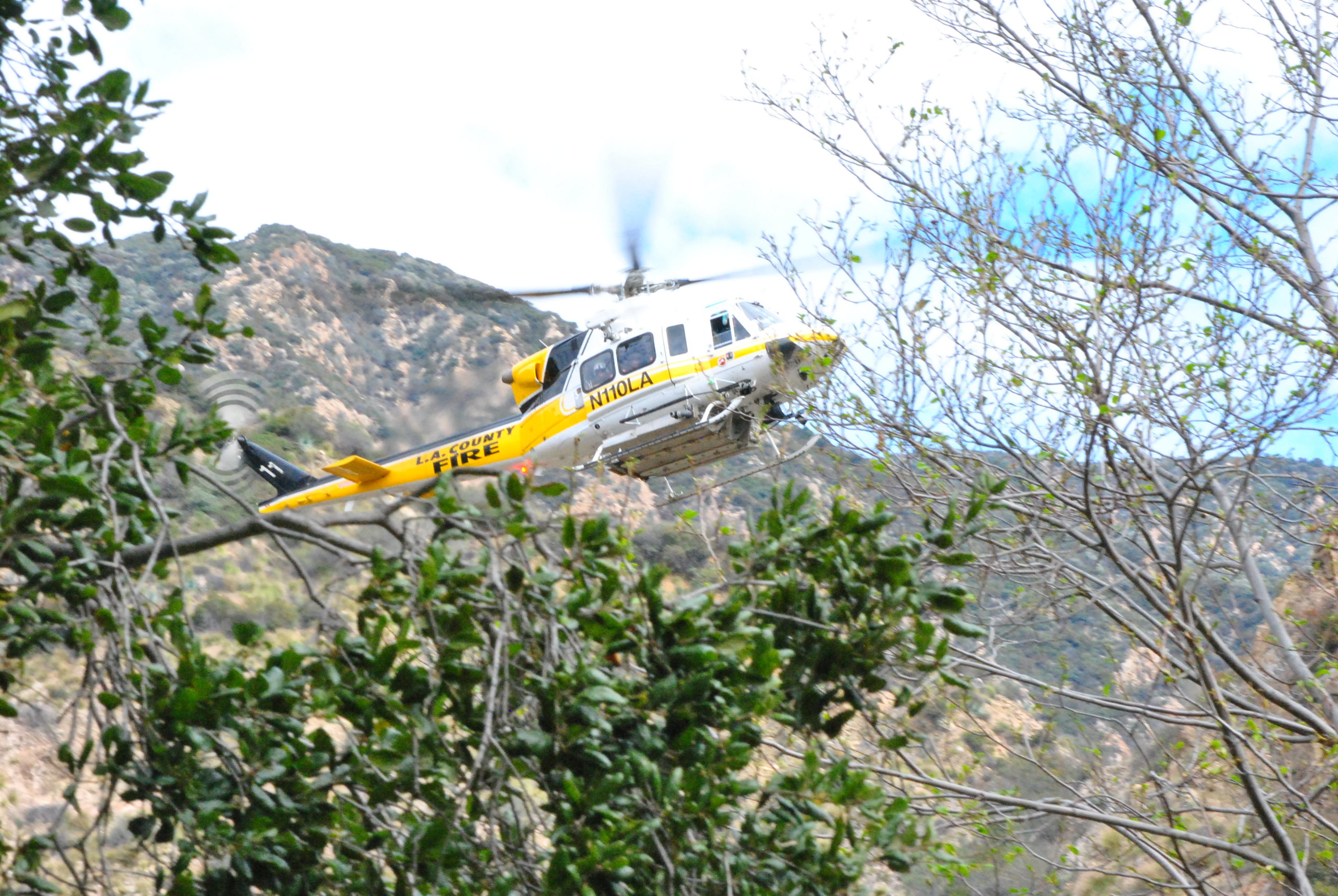
The pain medication has already been issued as the HERT groups take over the patients. The firefighters and EMTs have handled the first contact and are now there to assist HERT with further treatment.
Patients 1 and 3 are told they are going to have their limbs amputated. Patient 1 unexpectedly and immediately consents to the procedure.
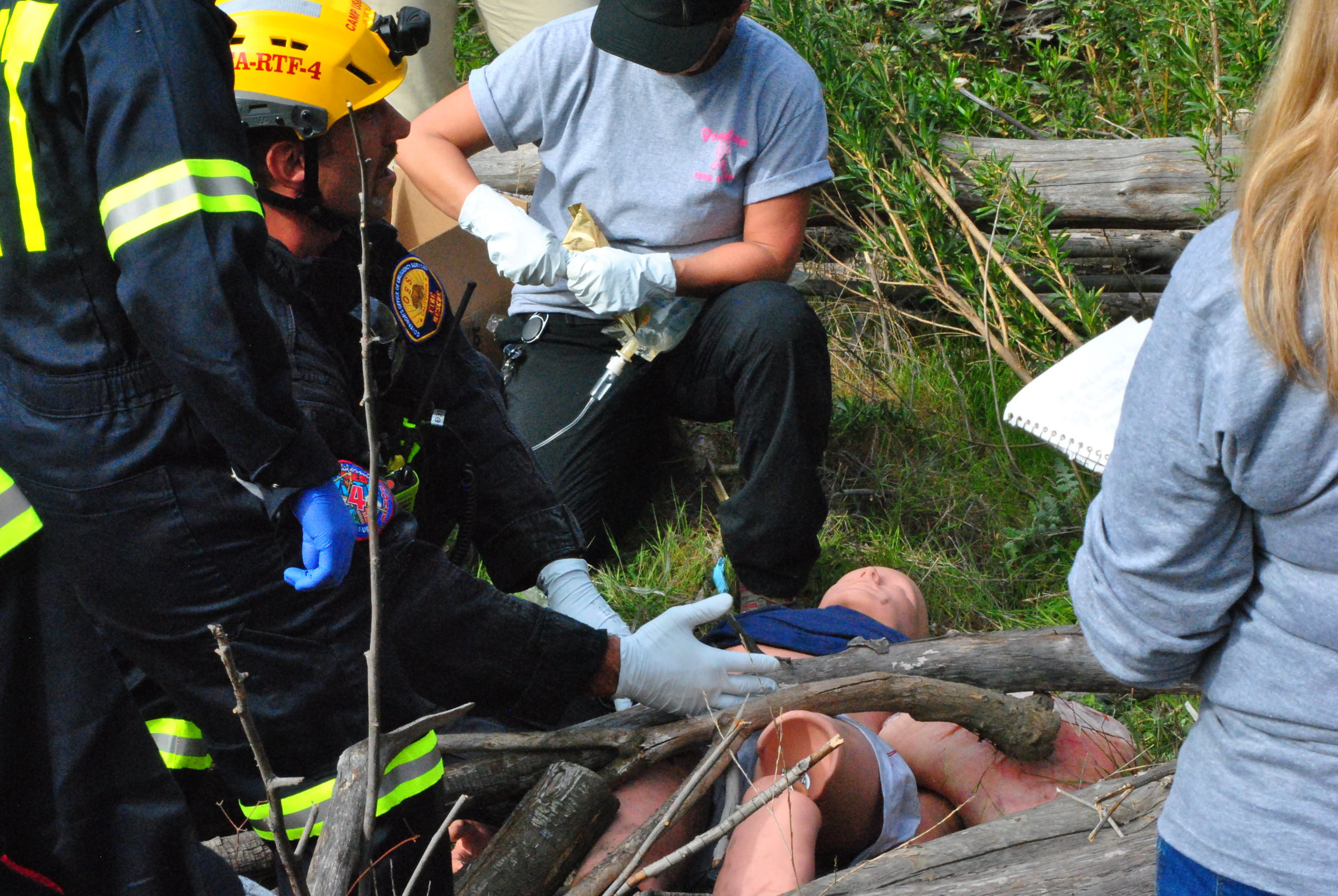
Meanwhile, Patient 4 is now naked, checked over for puncture wounds, monitored by EMTs and awaits transportation while the HERT group at Patient 3 notifies the patient of the impending amputation.
The surgeon working on Patient 1 crouches over the trapped leg of the victim, holding a scalpel. With something of a declarative warning, she says “This is going to hurt!” and begins slicing through the soft tissue of the lower half of a pig used to simulate a human body. She cuts down to the bone and brings out the saw to finish the procedure.
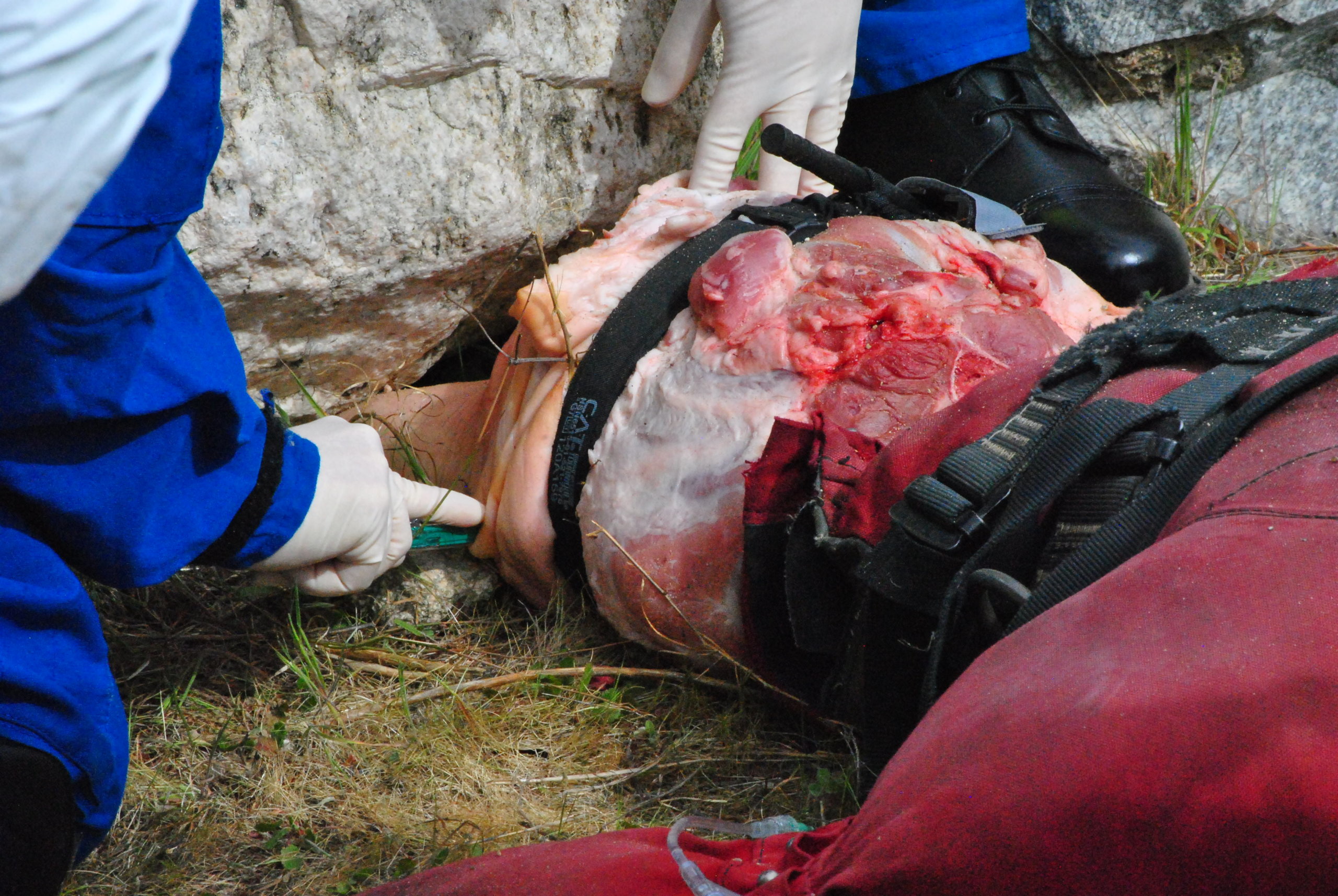
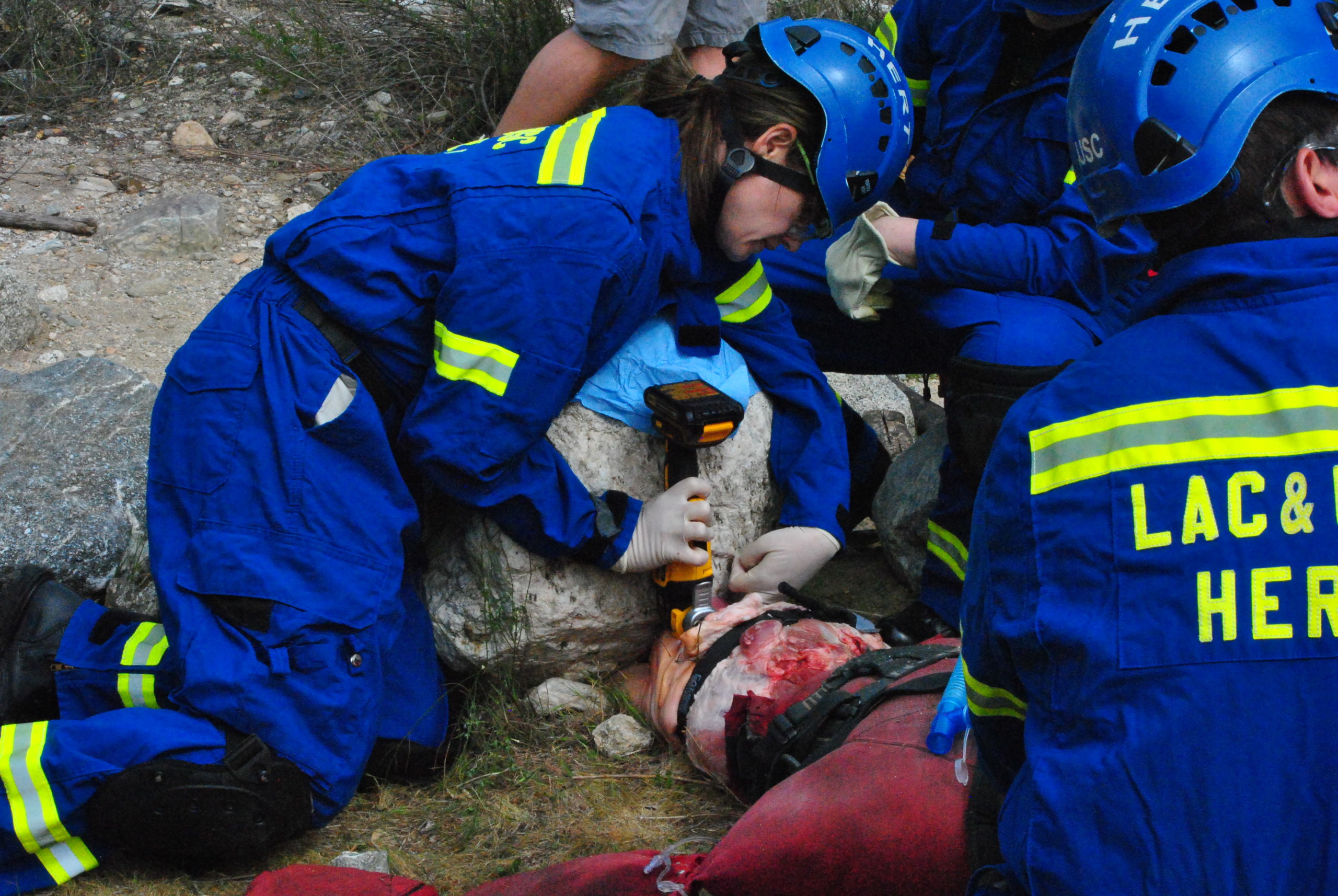
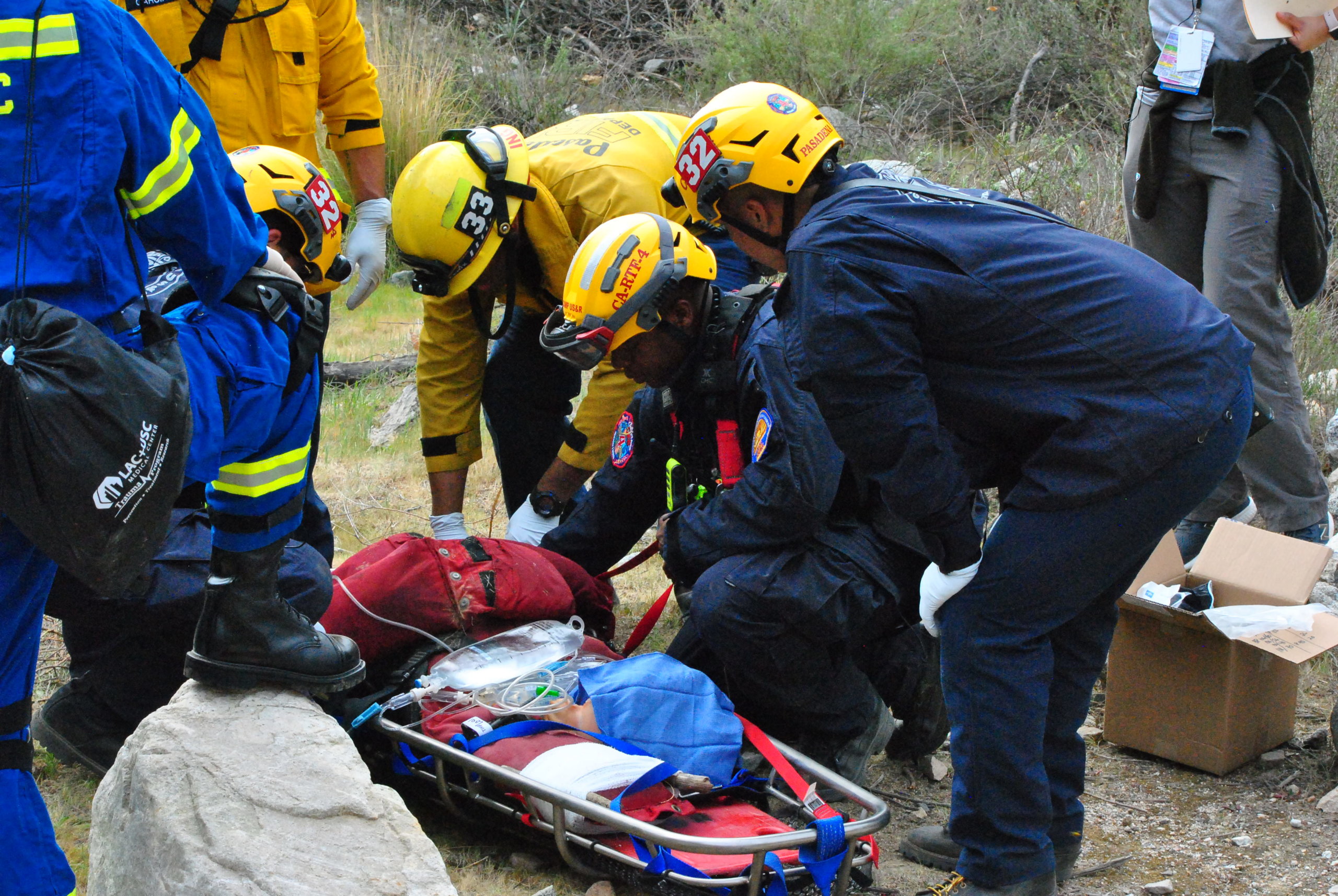
Once the patient’s leg has been removed, the team rolls her onto a backboard for movement and then lifts her into a cradle for rugged transportation. Patient 1 is then loaded onto the all-terrain vehicle, and accompanied by the surgeon as she is transported out of the canyon.
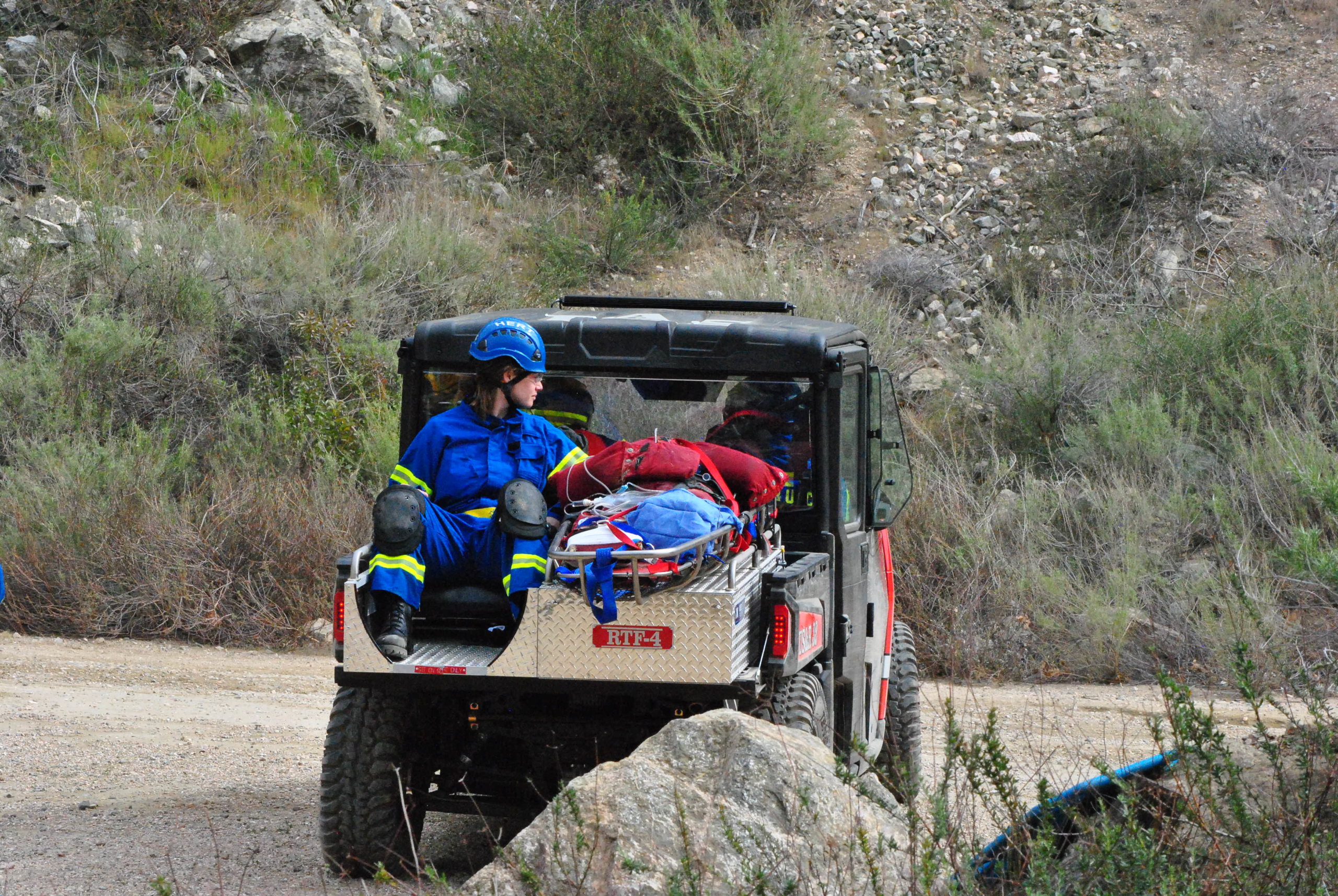
Left behind is the crushed, cut and sawn leg trapped under the boulder. Generally, a recovery team would dig out the limb and transport it with them to the hospital to see if the limb can be restored and reattached, which the doctor then confides usually cannot happen.
Today however, once the pig’s leg has been severed it becomes just a dirt-covered piece of meat spoiling in the intensifying heat of Southern California sunshine. The doctor reasons that it will soon be part of the ecosystem. Given the geographic location of the meat, the doctor is right; the coyotes will smell it and be after it once all the commotion dies down.
Moments later, Patient 3 is brought up, now one arm lighter, and loaded onto the helicopter in a simulated fashion.
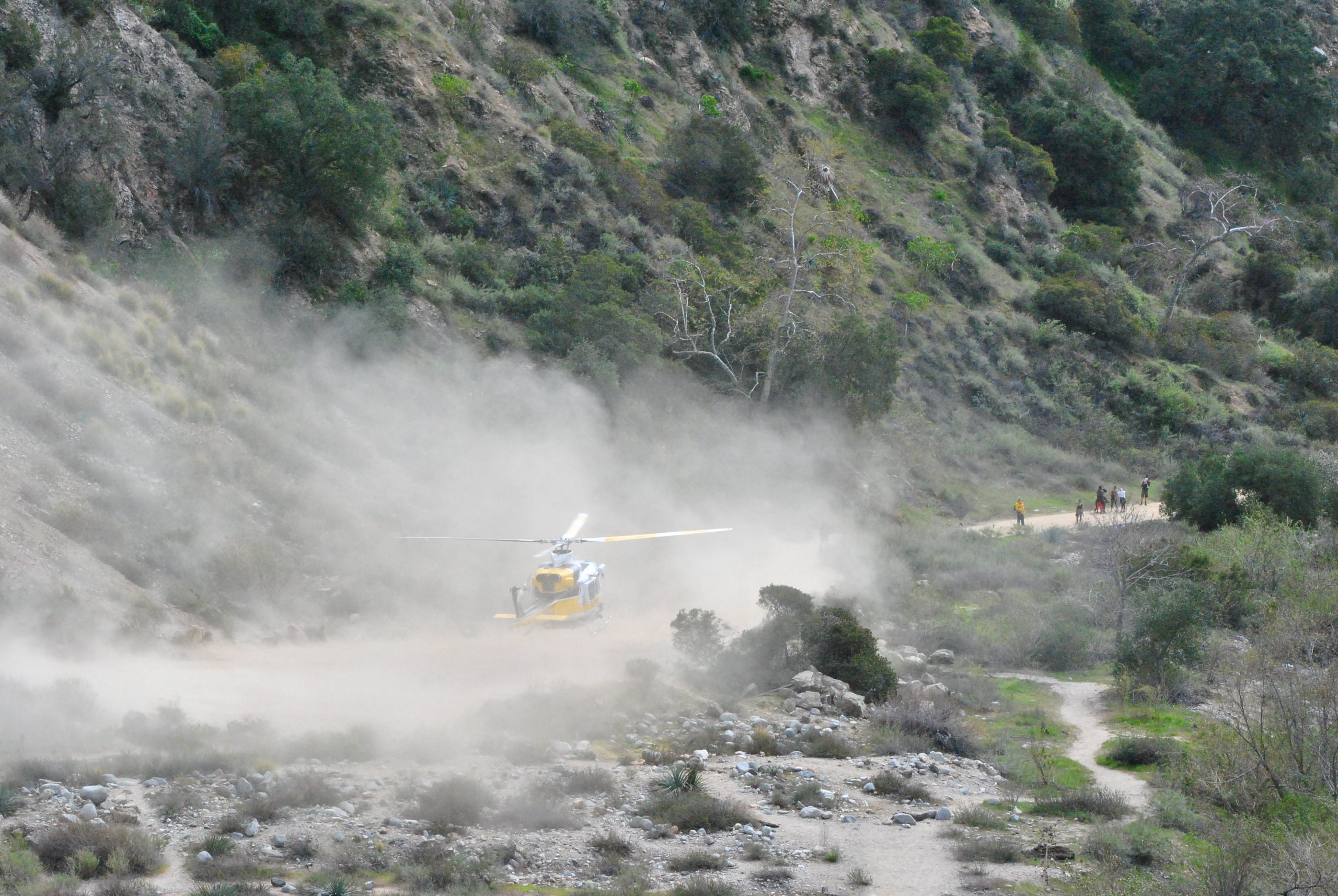
With all patients extracted, the team members then gather by the helicopter for their next instructions. They clean up the area, walk to the top of the hill where the leaders will conduct the “Hot Walk.”
The teams hike back up, sweating under the heat and gear. Once at the top, firefighter Hoffman drops a red plastic bag with a meaty thud onto the ground. Someone asks what it is. “That’s the pig leg,” said Hoffman. Pasadena has enough trouble with coyotes he admits.
A “Hot Walk” is a debriefing after action has been taken. The first responders go through their actions to the best of their memory. They fill in the gaps in each other’s stories and share the value of what they learned.
The PFD officers are not only satisfied but impressed by their performance. “The last patient was out at about 2 hours. That is a very impressive time for one patient, let alone four,” says one of them. “As an objective observer I am very impressed with what I’ve seen here today,” says another.
With the “Hot Walk” and training completed, the first responders leave to gather for lunch at the station. The vehicles begin to disappear and the helicopter has long since taken off.
Eaton Canyon’s natural calm is restored until disaster, real or simulated, strikes again.


